
/ Perfect Charging / Perfect Welding / Solar Energy
42,0426,0040,EN 004-21022019
Selectiva 1020E / 1030E / 2010E /
2015E / 2020E / 2032E / 2040E
Operating Instructions
Battery charging system
EN

2

3
EN
Dear reader,
Introduction Thank you for the trust you have placed in our company and congratulations on buying this
high-quality Fronius product. These instructions will help you familiarise yourself with the
product. Reading the instructions carefully will enable you to learn about the many different
features it has to offer. This will allow you to make full use of its advantages.
Please also note the safety rules to ensure greater safety when using the product. Careful
handling of the product will repay you with years of safe and reliable operation. These are
essential prerequisites for excellent results.
The latest version of the operating instructions can be found on the Fronius website
www.fronius.com.

4

5
EN
Contents
Safety rules ................................................................................................................................................ 7
Explanation of safety notices ................................................................................................................ 7
General ................................................................................................................................................. 7
Proper use ............................................................................................................................................ 8
Environmental conditions...................................................................................................................... 8
Mains connection.................................................................................................................................. 8
Dangers from mains current and charging current ............................................................................... 8
Danger due to acid, gases and vapours ............................................................................................... 9
General information regarding the handling of batteries....................................................................... 9
Protecting yourself and others .............................................................................................................. 9
Safety measures in normal operation ................................................................................................... 9
EMC Device Classifications.................................................................................................................. 10
EMC measures ..................................................................................................................................... 10
Data protection...................................................................................................................................... 10
Maintenance and repair ........................................................................................................................ 10
Warranty and liability............................................................................................................................. 10
Safety inspection................................................................................................................................... 10
Safety symbols...................................................................................................................................... 11
Disposal ................................................................................................................................................ 11
Copyright............................................................................................................................................... 11
General information ................................................................................................................................... 12
Principle ................................................................................................................................................ 12
Device concept ..................................................................................................................................... 12
Warning notices on the device.............................................................................................................. 12
Before commissioning................................................................................................................................ 14
Safety.................................................................................................................................................... 14
Proper use ............................................................................................................................................ 14
Mains connection.................................................................................................................................. 14
Safety strategy - standard protection devices ...................................................................................... 15
Control elements and connections............................................................................................................. 16
General ................................................................................................................................................. 16
Control panel......................................................................................................................................... 16
Plugging in options................................................................................................................................ 16
Connections.......................................................................................................................................... 17
Removing covers for connections and options ..................................................................................... 17
USB update option................................................................................................................................ 17
Fitting the optional bracket and strain-relief device for the charging lead............................................. 18
Edge guard option................................................................................................................................. 18
Wall bracket option ............................................................................................................................... 18
Preparations for security lock................................................................................................................ 19
Installation............................................................................................................................................. 20
Charging the battery .................................................................................................................................. 21
Starting charging .................................................................................................................................. 21
Finishing charging................................................................................................................................. 22
Interrupting charging............................................................................................................................. 22
Setup menu................................................................................................................................................ 23
General remarks ................................................................................................................................... 23
Accessing the Setup menu ................................................................................................................... 23
Selecting the characteristic type ........................................................................................................... 23
Troubleshooting ......................................................................................................................................... 24
Safety.................................................................................................................................................... 24
Protection devices................................................................................................................................. 24
Charging errors..................................................................................................................................... 25
Technical data............................................................................................................................................ 26
Explanation ........................................................................................................................................... 26

6

7
EN
Safety rules
Explanation of
safety notices DANGER!
Indicates immediate danger.
► If not avoided, death or serious injury will result.
WARNING!
Indicates a potentially hazardous situation.
► If not avoided, death or serious injury may result.
CAUTION!
Indicates a situation where damage or injury could occur.
► If not avoided, minor injury and/or damage to property may result.
NOTE!
Indicates a risk of flawed results and possible damage to the equipment.
IMPORTANT!
Indicates tips for correct operation and other particularly useful information.
This does not indicate a potentially hazardous situation.
If you see any of the symbols depicted in the "Safety rules" chapter, special care is re-
quired.
General The device is manufactured using state-of-the-art technology and according to recognised
safety standards. If used incorrectly or misused, however, it can cause:
- Injury or death to the operator or a third party
- Damage to the device and other material assets belonging to the operator
- Inefficient operation of the device
All persons involved in commissioning, operating, maintaining and servicing the device
must:
- Be suitably qualified
- Read and follow these Operating Instructions carefully
The Operating Instructions must always be at hand wherever the device is being used. In
addition to the Operating Instructions, attention must also be paid to any generally appli-
cable and local regulations regarding accident prevention and environmental protection.
All safety and danger notices on the device:
- Must be in a legible state
- Must not be damaged
- Must not be removed
- Must not be covered, pasted or painted over

8
For the location of the safety and danger notices on the device, refer to the section headed
"General information" in the Operating Instructions for the device.
Before switching on the device, rectify any faults that could compromise safety.
This is for your personal safety!
Proper use The device is to be used exclusively for its intended purpose. Any use above and beyond
this purpose is deemed improper. The manufacturer is not liable for any damage, or unex-
pected or incorrect results arising out of such misuse.
Proper use includes:
- carefully reading and obeying all operating instructions and safety and danger notices
- performing all stipulated inspection and maintenance work
- following all instructions from the battery and vehicle manufacturers
Proper handling of the device is essential for it to function correctly. The device must never
be pulled around by the cable.
Environmental
conditions
Operation or storage of the device outside the stipulated area will be deemed as "not in
accordance with the intended purpose". The manufacturer shall not be liable for any dam-
age resulting from such improper use.
For exact information on permitted environmental conditions, please refer to the "Technical
data" in the leaflet.
Mains connection Devices with a higher rating may affect the energy quality of the mains due to their current
consumption.
This may affect a number device types in terms of:
- Connection restrictions
- Criteria with regard to the maximum permissible mains impedance *)
- Criteria with regard to the minimum short-circuit power requirement *)
*) at the interface with the public grid
see "Technical data"
In this case, the plant operator or the person using the device should check whether the
device may be connected, where appropriate by discussing the matter with the power sup-
ply company.
IMPORTANT! Ensure that the mains connection is earthed properly
Dangers from
mains current
and charging cur-
rent
Anyone working with chargers exposes themselves to numerous dangers e.g.:
- Risk of electrocution from mains current and charging current
- Hazardous electromagnetic fields, which can risk the lives of those using cardiac
pacemakers
An electric shock can be fatal. Every electric shock is potentially life threatening. To avoid
electric shocks while using the charger:
- Do not touch any live parts inside or on the outside of the charger.
- Under no circumstances touch the battery poles
- Do not short-circuit the charging lead or charging terminals
All cables and leads must be secured, undamaged, insulated and adequately dimen-
sioned. Loose connections, scorched, damaged or inadequately dimensioned cables and
leads must be immediately repaired by authorised personnel.

9
EN
Danger due to ac-
id, gases and va-
pours
Batteries contain acid which is harmful to the eyes and skin. During charging, gases and
vapours are released that may be harmful to health and are highly explosive in certain cir-
cumstances.
- Only use the charger in well-ventilated areas to prevent the accumulation of explosive
gases. Battery rooms are not deemed to be hazardous areas provided that a concen-
tration of hydrogen of less than 4% can be guaranteed by the use of natural or forced
ventilation.
- Maintain a distance of at least 0.5 m (19.69 in.) between the battery and charger dur-
ing the charging procedure. Possible sources of ignition such as fire and naked flames
must be kept away from the battery
- The battery connection (e.g. charging terminals) must not be disconnected for any
reason during charging
- Do not inhale any of the gases and vapours released under any circumstances
- Make sure the area is well ventilated
- To prevent short circuits, do not place any tools or conductive metals on the battery
- Battery acid must not get into the eyes or onto the skin or clothes. Wear protective
goggles and suitable protective clothing. Rinse any acid splashes thoroughly with
clean water and seek medical advice if necessary.
General informa-
tion regarding the
handling of bat-
teries
- Protect batteries from dirt and mechanical damage.
- Store charged batteries in a cool place. Self discharge is kept to a minimum at approx.
+2 °C (35.6 °F).
- Every week, perform a visual inspection to ensure that the acid (electrolyte) level in
the battery is at the Max. mark.
- If any of the following occur, do not start the device (or stop immediately if already in
use) and have the battery checked by an authorised workshop:
- uneven acid levels and/or high water consumption in individual cells caused by a
possible fault.
- overheating of the battery above 55 °C (131 °F).
Protecting your-
self and others
While the charger is in operation, keep all persons, especially children, out of the working
area. If, however, there are people in the vicinity,
- warn them about all the dangers (hazardous acids and gases, danger from mains and
charging current, etc.),
- provide suitable protective equipment.
Before leaving the work area, ensure that people or property cannot come to any harm in
your absence.
Safety measures
in normal opera-
tion
- Chargers with a ground conductor must only be operated on a mains supply with a
ground conductor and a socket with a ground conductor contact. If the charger is op-
erated on a mains supply without a ground conductor or in a socket without a ground
conductor contact, this will be deemed gross negligence. The manufacturer shall not
be held liable for any damage arising from such usage.
- Only operate the charger in accordance with the degree of protection shown on the
rating plate.
- Never operate the charger if there is any evidence of damage.
- Arrange for the mains cable to be checked regularly by a qualified electrician to ensure
the ground conductor is functioning properly.
- Any safety devices and parts that are not functioning properly or are in imperfect con-
dition must be repaired by a qualified technician before switching on the charger.
- Never bypass or disable protection devices.
- After installation, an accessible mains plug is required.

10
EMC Device Clas-
sifications
Devices in emission class A:
- Are only designed for use in industrial settings
- Can cause line-bound and radiated interference in other areas
Devices in emission class B:
- Satisfy the emissions criteria for residential and industrial areas. This is also true for
residential areas in which the energy is supplied from the public low-voltage mains.
EMC device classification as per the rating plate or technical data.
EMC measures In certain cases, even though a device complies with the standard limit values for emis-
sions, it may affect the application area for which it was designed (e.g. when there is sen-
sitive equipment at the same location, or if the site where the device is installed is close to
either radio or television receivers).
If this is the case, then the operating company is obliged to take appropriate action to rectify
the situation.
Data protection The user is responsible for the safekeeping of any changes made to the factory settings.
The manufacturer accepts no liability for any deleted personal settings.
Maintenance and
repair
Under normal operating conditions, the device requires only a minimum of care and main-
tenance. However, it is vital to observe some important points to ensure it remains in a us-
able condition for many years.
- Before switching on, always check the mains plug and cable as well as charger leads
and charging terminals for any signs of damage.
- If the surface of the device housing is dirty, clean with a soft cloth and solvent-free
cleaning agent only
Maintenance and repair work must only be carried out by authorised personnel. Use only
original replacement and wearing parts (also applies to standard parts). It is impossible to
guarantee that bought-in parts are designed and manufactured to meet the demands made
on them, or that they satisfy safety requirements.
Do not carry out any modifications, alterations, etc. to the device without the manufactur-
er's consent.
Warranty and lia-
bility
The warranty period for the charger is 2 years from the date of invoice.
However, the manufacturer will not accept any liability if the damage was caused by one
or more of the following:
- Use of the charger "not in accordance with the intended purpose"
- Improper installation and operation
- Operating the charger with faulty protection devices
- Non-compliance with the operating instructions
- Unauthorised modifications to the charger
- Catastrophes caused by the activities of third parties and force majeure
Safety inspection The manufacturer recommends that a safety inspection of the device is performed at least
once every 12 months.

11
EN
A safety inspection should be carried out by a qualified electrician
- After any changes are made
- After any additional parts are installed, or after any conversions
- After repair, care and maintenance has been carried out
- At least every twelve months
For safety inspections, follow the appropriate national and international standards and di-
rectives.
Further details on safety inspections can be obtained from your service centre. They will
provide you, on request, with any documents you may require.
Safety symbols Devices with the CE mark satisfy the essential requirements of the low-voltage and elec-
tromagnetic compatibility directives.
Devices with the TÜV test mark satisfy the requirements of the relevant standards in Can-
ada, USA, Australia and Japan.
Devices with the EAC mark of conformity satisfy the requirements of the relevant standards
in Russia, Belarus, Kazakhstan, Armenia and Kyrgyzstan.
Disposal Do not dispose of this device with normal domestic waste! To comply with the European
Directive on Waste Electrical and Electronic Equipment and its implementation as national
law, electrical equipment that has reached the end of its life must be collected separately
and returned to an approved recycling facility. Any device that you no longer require must
either be returned to your dealer or given to one of the approved collection and recycling
facilities in your area. Ignoring this European Directive may have potentially adverse af-
fects on the environment and your health!
Copyright Copyright of these operating instructions remains with the manufacturer.
The text and illustrations are all technically correct at the time of printing. We reserve the
right to make changes. The contents of the operating instructions shall not provide the ba-
sis for any claims whatsoever on the part of the purchaser. If you have any suggestions for
improvement, or can point out any mistakes that you have found in the instructions, we will
be most grateful for your comments.

12
General information
Principle The main feature of the new Active Inverter
Technology is intelligent charging. This me-
ans that the charging behaviour adapts its-
elf automatically to the age and state of
charge of the battery. This innovation ex-
tends the battery life and reduces the
amount of maintenance required, while at
the same time improving cost-effective-
ness.
Active Inverter Technology is based on an
inverter with active rectification and an intel-
ligent safety cut-out. The charging current
and voltage are held constant by a digital
control that is not affected by any fluctua-
tions in the mains voltage.
Device concept The compact design reduces space requirements and makes portable use considerably
easier. Add to this the fact that the active inverters can be used "on-board". In addition to
its many existing features, the charger has a modular design that makes it easy to upgrade;
it is therefore ideally equipped for future requirements. A wide range of options is available.
Warning notices
on the device
A number of safety symbols can be seen on the charger's rating plate. The safety symbols
must not be removed or painted over.
Do not use the functions until you have read all the operating instructions.
Possible sources of ignition, such as fire, sparks and naked flames, must be kept
away from the battery.
Risk of explosion! Oxyhydrogen is generated in the battery during charging.
Battery acid is corrosive and MUST be kept away from eyes, skin and clothes.
SN:
In:
Out.:
Art. Nr.:
~230V 50/60Hz;xxxW
DC xxV/xxA
A-4600 Wels
www.fronius.com
Active Inverter xxxxE
IP 40
Always stop charging before you disconnect the charging cable!
EMC Emission
Class A
xxxxxxxx
xxxxxxxx
4,010,xxx

13
EN
Ensure an adequate supply of fresh air during charging. Maintain a distance of
at least 0.5 m (19.69 in.) between battery and charger during the charging pro-
cedure.
Do not dispose of used chargers with domestic waste. Dispose of them accord-
ing to safety rules.

14
Before commissioning
Safety WARNING!
Danger from incorrect operation.
This can result in severe personal injury and damage to property.
► Do not use the functions described here until you have fully read and understood the
following documents:
► Operating Instructions
► All the Operating Instructions for the system components, especially the safety rules
► Battery and vehicle manufacturer's Operating Instructions and safety rules
Proper use The charger is designed to charge the batteries listed below. Any use above and beyond
this purpose is deemed improper. The manufacturer shall not be liable for any damage re-
sulting from such use. Proper use also includes:
- following all the instructions contained in the Operating Instructions
- regular checking of the mains and charging leads
WARNING!
Danger from charging dry batteries (primary cells) and non-rechargeable batteries.
This may result in serious injury and damage to property.
► Only charge the battery types listed below.
The following battery types may be charged:
- Wet batteries:
sealed batteries with a liquid electrolyte (recognisable by the vent plugs) and low-
maintenance/maintenance-free wet batteries (MF)
- Absorbent Glass Mat (AGM) batteries:
sealed batteries (VRLA) with immobilised electrolyte (sealant)
- Gel batteries:
sealed batteries (VRLA) with immobilised electrolyte (gel)
Mains connection The rating plate, which is located on the housing, contains information about the permitted
mains voltage. The device is designed for this mains voltage only. The required fuse pro-
tection for the mains lead can be found in the accompanying characteristic data sheet. If
there is no mains cable or mains plug on your version of the appliance, fit one that con-
forms to national standards.
NOTE!
Danger due to insufficiently dimensioned electrical installations.
This may result in serious injury and damage to property.
► The mains lead and its fuse must be dimensioned to suit the local power supply. The
technical data shown on the rating plate applies.

15
EN
Safety strategy -
standard protec-
tion devices
The new chargers are not just characterised by purely functional features. In terms of safe-
ty, the active inverters are also equipped to the highest standards.
The following safety features come as standard:
- Voltage-free and spark-free terminals protect against explosions
- Reverse polarity protection prevents the battery or charger from being damaged or de-
stroyed
- Short-circuit protection provides effective protection for the charger. The fuse does not
need to be replaced in the event of a short circuit
- A charging time monitor provides effective protection against overcharging and de-
struction of the battery
- Overtemperature protection through derating (charging current reduced if the temper-
ature rises above the permitted level)

16
Control elements and connections
General Please note:
as a result of firmware updates, you may find that there are functions available on your de-
vice that are not described in these Operating Instructions, or vice versa.
Certain illustrations may also differ slightly from the actual controls on your device, but
these controls function in exactly the same way.
WARNING!
Danger from incorrect operation.
This can result in severe personal injury and damage to property.
► Do not use the functions described here until you have read and completely under-
stood these operating instructions.
► Do not use the functions described here until you have fully read and understood all of
the Operating Instructions for the system components, in particular the safety rules.
Control panel The control panel (LED version) is explained below.
(1) State of charge indicator 25%
(2) State of charge indicator 50%
(3) State of charge indicator 75%
(4) State of charge indicator 100%
(5) Ready indicator
(6) -
(7) Start/Stop and setup button
- for interrupting and restarting
charging
- for selecting the characteristic
type (press and hold for 10 s)
(8) Error indicator
Plugging in op-
tions NOTE!
Danger from connecting options and accessories while the mains plug is plugged
in.
This can result in damage to the device and accessories.
► Only connect options and system add-ons when the mains plug is unplugged and the
charging leads are disconnected from the battery.
(1)
(2)
(3)
(4)
(7)
(5)
(6)
(8)

17
EN
Connections
Bottom of housing
No. Function
(1) AC input - mains socket
(2) Mains cable safety bow
for fitting the mains cable
(3) Connection P2 - I/O port
for options on the I/O port
(4) Connection P1 - charger lead so-
cket
also for external stop and tempera-
ture-controlled charging options
Top of housing
No. Function
(5) Removable display
(6) Connection P3 - Visual Port
for connecting the internal display
(7) Connection P4 - Multi Port
for connecting the following op-
tions:
- Status lamp
- Software update via USB port
Removing covers
for connections
and options
If necessary, use a screwdriver to remove:
- Cover (1) for connection P4 - Multi Port
- Cover (2) for connection P2 - I/O port
Leave covers (1) and (2) in place on unu-
sed P2 and P4 connections.
USB update op-
tion
The USB update option allows the charger to be updated directly via the USB interface.
(1) (3) (4)
(2)
(6) (7)
(5)
(1)
(2)

18
Fitting the option-
al bracket and
strain-relief de-
vice for the charg-
ing lead
Please note:
the torque for all screws is 2.5 Nm (1.84 ft.
lb.).
To fit the bracket:
- Undo the screws (1)
- Fit bracket (2) using the previously re-
moved screws
To fit the strain-relief device:
- Undo screw (3)
- Fit charging lead strain-relief device (4)
using the previously undone screw
Edge guard op-
tion
The edge guard removal process is the re-
verse of the fitting process.
The bracket cannot be fitted if the edge gu-
ard is already in place.
Wall bracket op-
tion
Different wall plugs and screws will be required depending on the supporting surface. Wall
plugs and screws are therefore not included in the scope of supply. The installer is respon-
sible for selecting the right wall plugs and screws.
1
2
3
4
(1) (2) (3) (4)
1
2
2
1
1
"click"
"click"
~ 120 mm
~ 4.72 inch
130 mm
5.12 inch

19
EN
Preparations for
security lock
The security lock is not contained in the
scope of supply.
A security lock can only be attached
- to the groove on the housing as shown
- to the groove on the housing that is ex-
actly opposite
- using spacer M8 DIN 125 or DIN 134,
located as shown

20
Installation If installing the charger on a firm base, use the drilling template enclosed in the packaging.
If the charger is installed in a switch cabinet (or a similar sealed area), then forced-air ven-
tilation must be provided to ensure adequate heat dissipation. There must be a clearance
of 10 cm (3.94 in.) all around the charger.
The space requirement measurements in mm (inches) illustrated below are given to en-
sure that there is easy access to the plug connections:
*Space for installation/removal
Space requirements with edge protector (*Space for installation/removal)
247 (9.72)
88 (3.46)
126 (4.97)
140 (5.51)
60 +20*
(2.36 + .79*)
70 + 20*
(2.76 + .79)
11 + 5*
(.43 + .2*)
162 (6.38)
233 (9.17)
6,5 (.26)
100 (3.94)
15,5 (.61)
168
(6.61)
270 (10.63)
Page is loading ...
Page is loading ...
Page is loading ...
Page is loading ...
Page is loading ...
Page is loading ...
Page is loading ...
Page is loading ...
-
 1
1
-
 2
2
-
 3
3
-
 4
4
-
 5
5
-
 6
6
-
 7
7
-
 8
8
-
 9
9
-
 10
10
-
 11
11
-
 12
12
-
 13
13
-
 14
14
-
 15
15
-
 16
16
-
 17
17
-
 18
18
-
 19
19
-
 20
20
-
 21
21
-
 22
22
-
 23
23
-
 24
24
-
 25
25
-
 26
26
-
 27
27
-
 28
28
Fronius Selectiva 1030E Operating Instructions Manual
- Type
- Operating Instructions Manual
- This manual is also suitable for
Ask a question and I''ll find the answer in the document
Finding information in a document is now easier with AI
Related papers
-
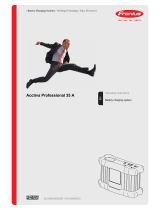 Fronius Acctiva Professional 35 A User manual
Fronius Acctiva Professional 35 A User manual
-
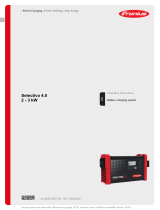 Fronius Selectiva 4.0 4035 Operating Instructions Manual
Fronius Selectiva 4.0 4035 Operating Instructions Manual
-
Fronius Selectiva 2035E Operating Instructions Manual
-
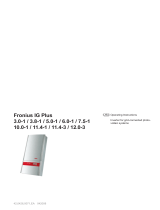 Fronius IG Plus A 3.8-1 UNI Operating Instructions Manual
Fronius IG Plus A 3.8-1 UNI Operating Instructions Manual
-
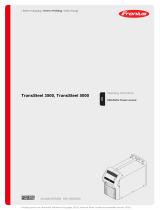 Fronius TransSteel 5000 Operating Instructions Manual
Fronius TransSteel 5000 Operating Instructions Manual
-
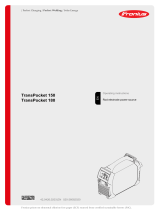 Fronius TransPocket 150 Operating Instructions Manual
Fronius TransPocket 150 Operating Instructions Manual
-
Fronius Energy Package User manual
-
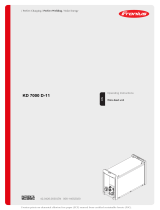 Fronius KD 4000 D-11 Operating Instructions Manual
Fronius KD 4000 D-11 Operating Instructions Manual
-
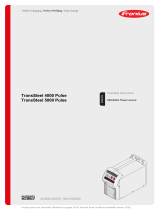 Fronius TransSteel 5000 Pulse Operating Instructions Manual
Fronius TransSteel 5000 Pulse Operating Instructions Manual
-
Fronius Selectiva 4035 2kW Operating Instructions Manual
Other documents
-
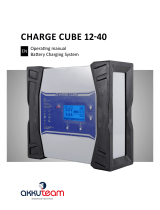 akkuteam CHARGE CUBE 12-40 Operating instructions
akkuteam CHARGE CUBE 12-40 Operating instructions
-
Jungheinrich SLT 100 Operating instructions
-
Jungheinrich EJD 222 Operating instructions
-
Elektron HS12/24-120B Owner's manual
-
Elektron HS 12/24-120-20M Owner's manual
-
Jungheinrich ERC 214z Operating Instructions Manual
-
Jungheinrich ERE 120 Operating Instructions Manual
-
Victron energy EasySolar-II GX Owner's manual
-
Jungheinrich SLH 200 Operating instructions
-
Jungheinrich EJC M10 (E) Operating instructions



































